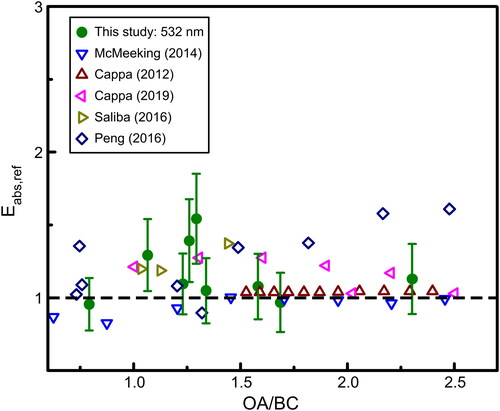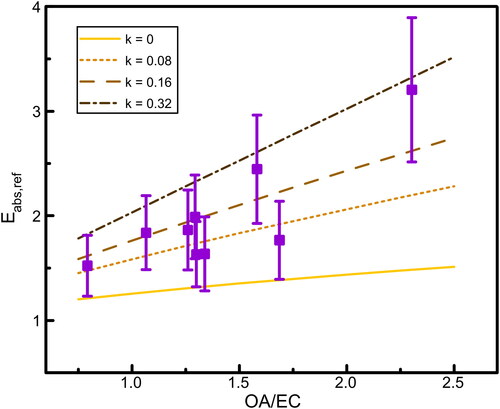Figures & data
Figure 2. Transmission efficiencies of particles as a function of the mobility size for different operating temperatures of the thermodenuder.
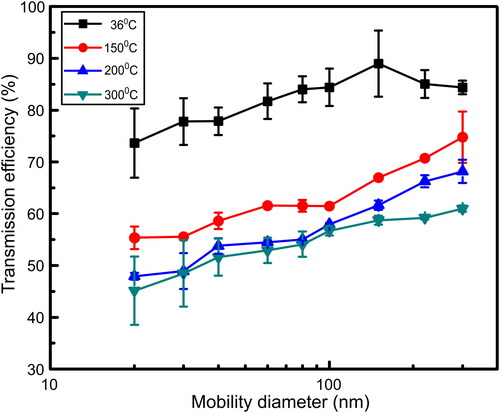
Figure 3. Size distribution of undenuded (red solid line) and denuded (black dashed line) particles in one set of experiments. The perforated lines represent the mode of each distribution, which decreased by 32 nm post-thermodenuding.
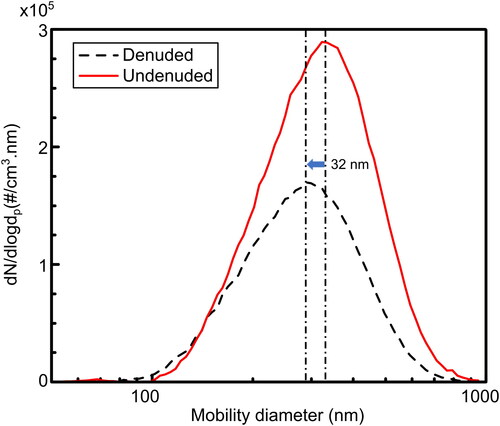
Figure 4. Change in ΔSSA/SSAUD at 375 nm (blue circles) and 532 nm (green circles) as a function of thermodenuder operating temperatures. The error bars represent two standard deviations from experiments at each temperature.

Figure 5. (a) Measured values of Eabs,TD at 375 nm and 532 nm as a function of the operating temperature of the thermodenuder. The shaded region indicates the range of variability in experiments at each temperature. (b) Measurements of Eabs,ref as a function of the OA/BC mass ratio of the aerosol. The error bars represent uncertainties in IPN and TOR measurements as well as variability in MACBC,ref values.
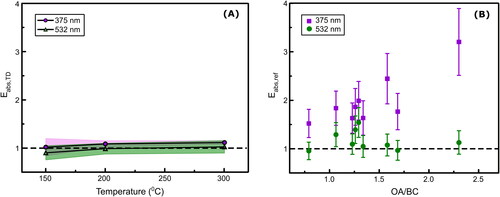
Figure 6. Compilation of absorption enhancement values at 532 nm from multiple studies superimposed on data obtained in this study at 532 nm. The low value of absorption enhancement at 532 nm indicates an absence of Eabs due to the lensing effect at OA/BC ratios lower than 3. The large Eabs values at 375 nm would thus be a result of BrC absorption at that wavelength.
